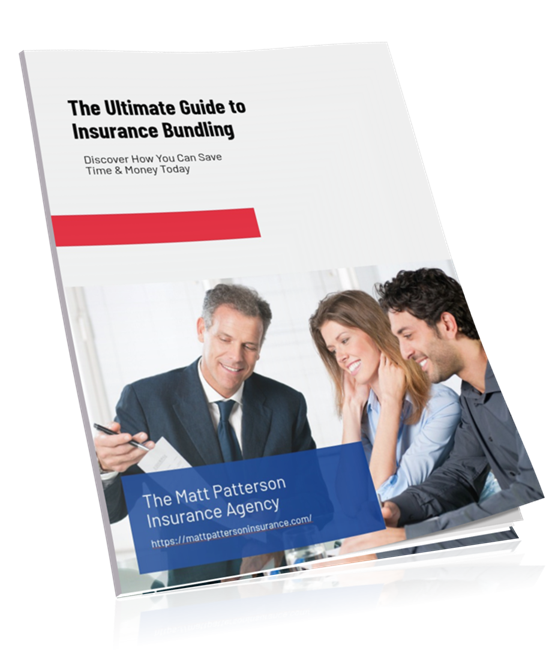Insurance is one of the cornerstones of financial security for both families and businesses. We buy it with the expectation that it will be there for us when we need it most. But too often, people discover that their policy has a “gap,” a hole in the coverage that leaves them exposed to significant financial loss. This discovery almost always happens at the worst possible time, in the aftermath of an accident, a lawsuit, or a disaster.
A coverage gap is not the result of a bad insurance company. It’s usually the result of a policy that has not been properly tailored to your specific needs or has not been updated as your life or your business has changed. At Matt Patterson Insurance, we believe that a proactive approach to insurance is the best way to prevent these costly surprises. Let’s explore some of the most common coverage gaps we see and how you can close them.
The Water Damage Surprise
One of the most common and expensive coverage gaps involves water damage. Most homeowners believe their standard home insurance policy covers all types of water damage. This assumption is dangerously wrong.
A standard homeowner’s policy typically covers water damage that is sudden and accidental. This includes things like a burst pipe, a malfunctioning washing machine hose, or a roof leak caused by storm damage. But it specifically excludes two major categories of water damage: flooding and seepage.
Flooding, defined as water that enters your home from the ground level due to rising water or surface runoff, requires a completely separate flood insurance policy. If a heavy rainstorm causes a nearby creek to overflow and water rushes into your home, your standard policy will not cover a single dollar of the damage.
Seepage refers to water that gradually enters your home through cracks in the foundation, around windows, or through poor grading. Because this is considered a maintenance issue rather than a sudden event, it is also typically excluded.
The financial impact of this gap can be staggering. Flood damage to a single family home can easily cost tens of thousands of dollars to remediate and repair. Without the proper coverage, the homeowner bears the entire burden.
The Business Interruption Blind Spot
For business owners, one of the most devastating coverage gaps is the failure to have adequate business interruption insurance. Many small business owners carry property insurance that covers damage to their building and equipment, but they don’t have coverage for the income they lose when they are forced to close.
Imagine a restaurant that experiences a kitchen fire. The property insurance covers the cost to repair the physical damage, but the restaurant is closed for two months during the repairs. During that time, there is no revenue coming in, but the rent, loan payments, and many other fixed expenses continue. Without business interruption coverage, those lost earnings and ongoing expenses come directly out of the owner’s pocket.
Even more insidious is the scenario where a business is not directly damaged but is still forced to close. If a major road construction project blocks access to your storefront for three months, causing a dramatic drop in sales, you likely have no coverage for that lost income unless you have a very specific type of endorsement on your policy.
The Employment Practices Liability Gap
A growing area of coverage concern for businesses of all sizes is employment related lawsuits. An employee or former employee can sue your company for wrongful termination, discrimination, harassment, or retaliation. These lawsuits are expensive to defend and can result in significant settlements or judgments.
Many business owners mistakenly believe their general liability policy will cover them in these situations. It will not. General liability is designed to cover claims of bodily injury and property damage to third parties. It specifically excludes claims arising from employment practices.
Without a dedicated Employment Practices Liability Insurance policy, the business owner is paying for legal defense and any settlement out of pocket. Even if the claim is ultimately found to be without merit, the legal fees alone can be financially crippling for a small business.
The Underinsured Motorist Problem
Most people understand the importance of having auto insurance, and most states legally require it. But what happens when you are seriously injured in an accident caused by a driver who has only the minimum required coverage, which is often woefully inadequate?
In many states, the minimum liability coverage required by law is as low as $30,000 per person for bodily injury. If you are severely injured and face $200,000 in medical bills, lost wages, and rehabilitation costs, the at fault driver’s insurance will only pay the first $30,000. Where does the other $170,000 come from?
This is where uninsured and underinsured motorist coverage becomes critical. This coverage is an optional part of your own auto insurance policy that protects you when the other driver doesn’t have enough insurance to cover your damages. Yet, many people decline this coverage to save a few dollars on their premium, not realizing the enormous financial risk they are accepting.
The Umbrella You Don’t Have
All of the coverage gaps we’ve discussed so far can be closed by purchasing the appropriate specific policies. But there is one overarching gap that can affect anyone: a lack of umbrella liability coverage.
An umbrella policy provides an extra layer of liability protection that sits on top of your existing home and auto policies. It kicks in when the liability limits on those primary policies are exhausted. For a relatively small annual premium, you can purchase an additional one million dollars or more in coverage.
Without an umbrella policy, you are personally liable for any judgment or settlement that exceeds the limits of your primary policies. This means your savings, your retirement accounts, your future earnings, and potentially even your home could be at risk in a major lawsuit.
The peace of mind and financial protection an umbrella policy provides is immense, yet a surprising number of people, especially those with significant assets to protect, don’t have one.
Closing the Gaps Before They Close In on You
The common thread in all of these scenarios is a lack of awareness. People don’t intentionally leave themselves exposed. They simply don’t know what they don’t know. The policy they purchased years ago may have made sense at the time, but their life and their risks have evolved.
This is why a comprehensive, annual insurance review with a knowledgeable agent is not a luxury but a necessity. A good agent doesn’t just sell you a policy and disappear. They act as your ongoing risk management partner, identifying the gaps in your coverage and helping you close them before a crisis occurs. The cost of the right coverage is always a fraction of the cost of being wrong.
FAQs
I live in an area that’s not in a flood zone. Do I really need flood insurance?
Flood zones are based on historical data and probability, not certainty. Approximately 25 percent of all flood claims come from properties outside designated high risk flood zones. Flash floods, heavy rainfall, and changing climate patterns mean flooding can happen almost anywhere. Flood insurance outside a high risk zone is often very affordable, making it a smart investment for peace of mind.
How much does an umbrella liability policy typically cost?
The cost is surprisingly affordable. For most individuals and families, a one million dollar umbrella policy costs between $150 and $300 per year. The exact cost depends on factors like how many homes and cars you own and your underlying liability limits. It is one of the best values in all of insurance.
If I work from home, does my homeowner’s insurance cover my business equipment and liability?
Typically, no. A standard homeowner’s policy provides very limited coverage for business property, often just $2,500, and it excludes business liability entirely. If you run any type of business from your home, even a simple consulting practice, you should speak with your agent about a home business endorsement or a separate business owner’s policy.
What is the difference between actual cash value and replacement cost coverage?
Actual cash value pays you the depreciated value of your property at the time of the loss. Replacement cost pays the amount needed to replace the item with a new one of similar quality. For example, if your ten year old roof is damaged, actual cash value would only pay a fraction of the cost of a new roof, while replacement cost would pay the full amount.
How can I be sure I’m not missing any important coverage?
The best way is to schedule a comprehensive policy review with an independent insurance agent. Bring all of your current policies and have an honest conversation about your life, your assets, and your concerns. A good agent will identify any gaps and provide clear recommendations to address them. This review should be done at least once a year or whenever you experience a major life change.







